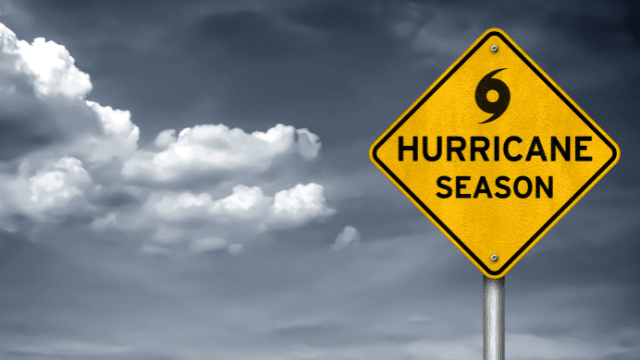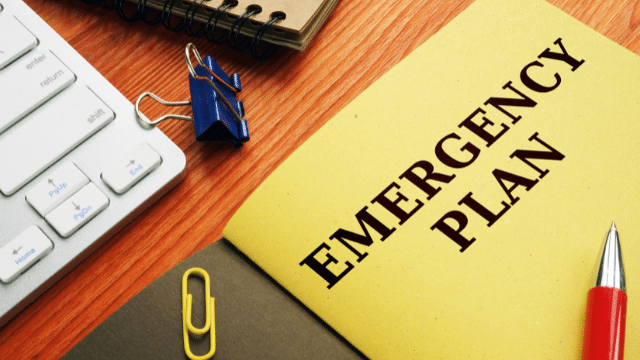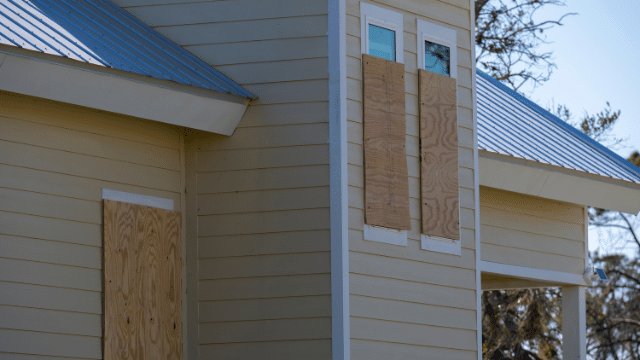Hurricane preparedness is a seasonal concern and a vital responsibility for those living in hurricane-prone areas. Understanding the risks, creating a family emergency plan, and building an emergency kit is essential to ensure safety and readiness. With hurricanes posing a serious threat to life and property, having a comprehensive preparation strategy can make all the difference. This article will guide you through the critical aspects of hurricane emergency preparation, providing actionable insights and practical tips. Let’s embark on this journey to safeguard ourselves and our loved ones from the devastating effects of hurricanes.
Contents
- 1 Understanding the Risk
- 2 Creating a Family Emergency Plan
- 3 Building an Emergency Kit
- 4 Securing Your Home
- 5 Preparing Your Vehicle
- 6 Protecting Important Documents
- 7 Understanding Evacuation Routes
- 8 Caring for Pets and Livestock
- 9 Staying Informed
- 10 Post-Hurricane Safety
- 11 Embracing Preparedness and Building Resilience
Understanding the Risk

Hurricanes are powerful tropical storms that can cause catastrophic damage to life and property. Understanding the risks associated with hurricanes is the first step in preparing for them. These storms can bring heavy rainfall, strong winds, storm surges, and even tornadoes. Regions most affected by hurricanes should be well-versed in the potential dangers and take appropriate measures to mitigate the risks. Awareness of the risks is the foundation of any effective emergency preparation plan.
The severity of hurricanes can vary, and so does the level of threat they pose. Knowing the categories of hurricanes and what they mean can help in assessing the risk level for your area. Local weather agencies and government bodies often provide valuable information and warnings about upcoming hurricanes. Staying informed and understanding the specific risks for your region enables you to take targeted and effective preparation steps. Remember, knowledge is power, and in this case, it could be a lifesaver.
Creating a Family Emergency Plan

A well-thought-out family emergency plan is crucial in the face of a hurricane. This plan should include evacuation routes, emergency contacts, and meeting points. Every family member should be involved in the planning process to ensure that everyone knows what to do. Regularly reviewing and practicing the plan can make it more effective. A well-executed family emergency plan can provide structure and calm during the chaos of a hurricane.
A family emergency plan should also consider the unique needs of each family member, including pets, elderly relatives, or those with special medical needs. Including provisions for these specific requirements ensures that no one is left vulnerable during a hurricane. Communication is key, and having a clear understanding of each other’s roles and responsibilities can make the execution of the plan smoother. Preparing together as a family not only strengthens the plan but also fosters unity and cooperation.
Building an Emergency Kit

An emergency kit is a collection of essential items that you may need during a hurricane. This includes:
- Non-perishable food
- Water
- Medications
- Flashlights
- Batteries
- First aid supplies
Having these items readily available can make a significant difference in your comfort and survival during a storm. It’s advisable to store these supplies in a waterproof container and keep them in an easily accessible location. Building an emergency kit is a practical step in ensuring that you have the necessary resources at hand.
In addition to the basic necessities, an emergency kit should include personal documents, cash, and other specific items that individual family members may need. Tailoring the kit to your family’s needs ensures you are well-prepared for various scenarios. Regularly checking and updating the kit to replace expired items or add new ones is equally important. Building and maintaining an emergency kit is not a one-time task but an ongoing commitment to safety and readiness.
Securing Your Home

Protecting your home from the potential damages of a hurricane is a vital part of preparation. Windows and doors are particularly vulnerable to strong winds and flying debris. Using storm shutters or plywood to cover them can provide added protection. Outdoor objects such as furniture, grills, and potted plants should be secured or brought inside to prevent them from becoming dangerous projectiles. These precautions can minimize damage and help keep your home and family safe.
Other aspects of securing your home include checking the roof for loose shingles and ensuring that gutters and downspouts are clear to prevent flooding. If you live in a flood-prone area, consider installing sump pumps or other flood protection measures. Trees and branches near the house should be trimmed to prevent them from falling on the structure. Preparing your home for a hurricane is a multifaceted task that requires careful planning and execution. The safety and integrity of your home depend on these essential preparations.
Preparing Your Vehicle

Your vehicle may be a critical part of your evacuation plan, so ensuring it is ready for a hurricane is essential. This includes keeping the gas tank full and checking the tires, brakes, and other essential parts for proper functioning. An emergency supply kit for the vehicle should be prepared, including maps, tools, and a spare tire. Knowing the planned evacuation routes and having alternative options can help avoid traffic jams and road closures. Preparing your vehicle is not just about maintenance but also about planning and readiness for potential evacuation.
Consider the needs of all passengers, including pets, when preparing your vehicle. Items such as blankets, snacks, water, and entertainment for children can make the journey more comfortable. Staying informed about road conditions and weather updates during the evacuation is also crucial. Utilizing navigation apps that provide real-time traffic information can be helpful. The goal is to make the evacuation process as smooth and stress-free as possible, and a well-prepared vehicle plays a key role in achieving that.
Protecting Important Documents

Important documents such as identification, insurance policies, medical records, and legal papers should be safeguarded during a hurricane. Creating digital copies and storing them in a secure cloud service can provide additional protection. Physical copies should be kept in a waterproof container and included in your emergency kit. These documents, such as filing insurance claims or proving ownership, may be essential for recovery efforts after the storm. Protecting important documents is a step that is often overlooked but can have significant implications.
Regularly updating and reviewing the documents ensures they are current and relevant. Consider including a list of important contacts in this collection, such as family members, doctors, and insurance agents. Having all these documents organized and readily accessible can save time and reduce stress during a chaotic situation. It’s not just about preserving the documents but also about having them available when needed. Thoughtful planning and organization of important documents can streamline recovery and provide peace of mind.
Understanding Evacuation Routes

Knowing where to go and how to get there is a critical part of hurricane preparedness. Understanding the local evacuation routes, shelters, and safe zones is essential for a successful evacuation. Local authorities often provide maps and information about designated evacuation routes and shelters. Familiarizing yourself with these routes and having printed copies can be invaluable during an evacuation. Timing is crucial, and understanding when to evacuate can make the process more efficient and safe.
Consider potential traffic and road closures when planning your evacuation. Having alternative routes and being flexible can help avoid delays. If you have special needs or require assistance, contact local emergency services in advance to understand the available resources and support. Evacuation is not just about leaving; it’s about knowing where to go and how to get there safely. Collaborating with neighbors and community members can also enhance the effectiveness of the evacuation process. Understanding and planning for evacuation is a complex but vital aspect of hurricane preparedness.
Caring for Pets and Livestock

Pets and livestock are often considered part of the family, and their needs must be addressed in hurricane preparation. Creating a pet emergency kit with food, water, medications, and other essential items is crucial. Identifying pet-friendly shelters or making arrangements with friends or family who can accommodate pets is equally important. Livestock may require special considerations, such as safe locations and transportation. Planning for the care of pets and livestock is not just a responsibility but a reflection of compassion and foresight.
Consider each animal’s specific needs and behaviors when planning. Some pets may require carriers or crates, while others require special dietary considerations. Livestock may need access to shelter and fresh water during the storm. Regularly updating vaccinations and having veterinary records can facilitate sheltering or travel with pets. The well-being of pets and livestock during a hurricane depends on thoughtful planning and consideration of their unique needs and requirements.
Staying Informed

Staying informed before, during, and after a hurricane is vital for safety and effective decision-making. Following local news, weather updates, and official warnings provides real-time information about the storm’s progress and potential impact. Utilizing weather apps, radios, and social media channels from trusted sources can enhance access to information. Heeding official instructions and warnings is not just advisable but can be life-saving. Staying informed is an ongoing process that requires vigilance and responsiveness.
Communication within the family and community is also part of staying informed. Sharing information and coordinating with neighbors can create a support network during the storm. Understanding the communication plans of local authorities and emergency services can facilitate access to help if needed. Battery-powered or hand-crank radios can be valuable if power is lost. Staying informed is not a passive activity but an active engagement with various information sources to ensure safety and appropriate action.
Post-Hurricane Safety

Once the storm has passed, safety remains a priority. Avoiding flooded areas, downed power lines and checking for structural damages are essential steps in post-hurricane safety. Listening to local authorities and following their instructions for returning home or other actions is crucial. Using flashlights instead of candles to prevent fire risks and checking for gas leaks are practical safety measures. Post-hurricane safety is about cautious assessment and adherence to safety guidelines.
Recovery efforts may include cleanup, repairs, and dealing with insurance claims. Wearing protective gear during cleanup and being mindful of potential hazards can prevent injuries. Seeking professional help for major repairs and understanding your insurance coverage can facilitate recovery. Connecting with community resources and support groups can also aid in recovery. Post-hurricane safety and recovery is a complex phase that requires patience, caution, and collaboration.
Embracing Preparedness and Building Resilience
The journey through hurricane preparedness is comprehensive and multifaceted, covering everything from understanding the risks to post-hurricane safety. Each step is vital, and the collective effort ensures that you, your family, and even your pets and livestock are well-prepared for the storm. This guide provides actionable insights and practical tips to navigate the complexities of hurricane preparation. Remember, preparation is not a one-time event but an ongoing commitment to safety and readiness. Let’s take these steps together to build resilience and face hurricanes with confidence and control.


